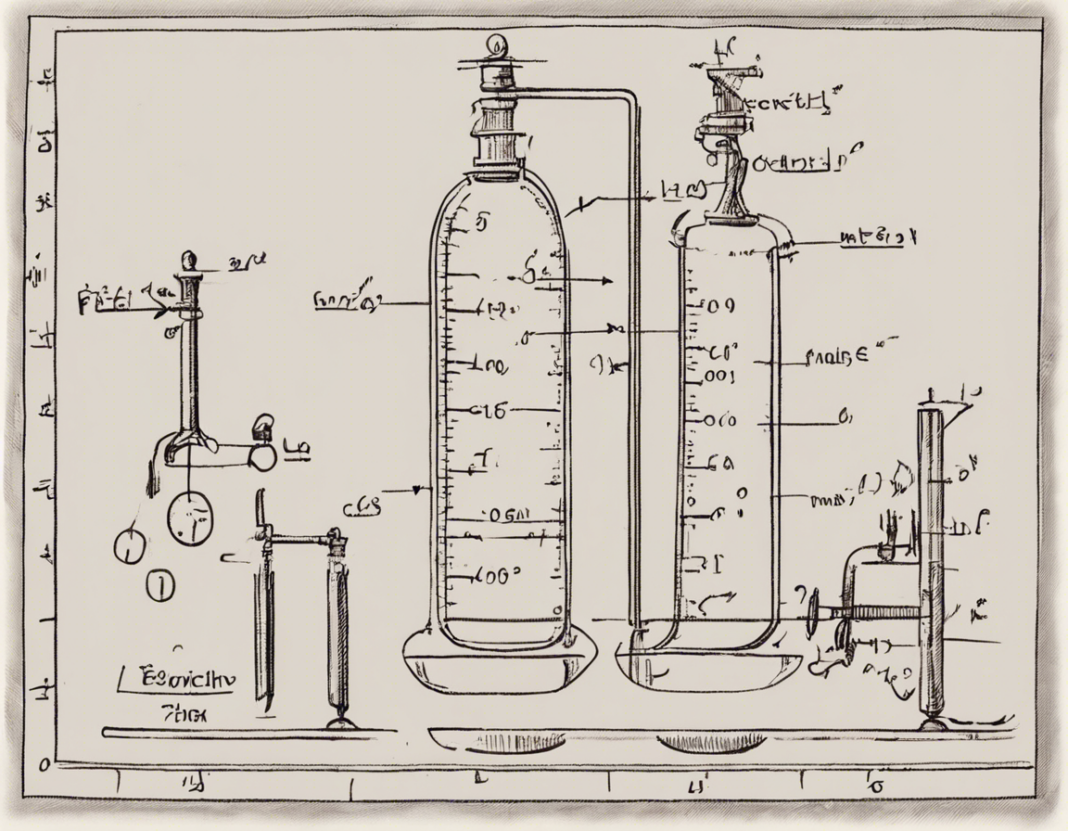As a prominent physical chemistry concept, osmotic pressure plays a crucial role in various industries and biological systems. Understanding how to calculate osmotic pressure in pascal (Pa) can provide valuable insights into solutions and their behavior. In this article, we will delve into the concept of osmotic pressure, its significance, and the steps to calculate it in pascal units.
Concept of Osmotic Pressure
Osmotic pressure is the pressure required to prevent the flow of solvent across a semipermeable membrane, which separates a pure solvent and a solution. This phenomenon occurs when there is a concentration gradient of solute particles between the two sides of the membrane. The solvent flows from the side of lower solute concentration to the side of higher solute concentration until equilibrium is reached.
Osmotic pressure is directly proportional to the molar concentration of the solute in the solution. This relationship is described by the Van’t Hoff equation:
[ \Pi = iMRT ]
Where:
– Π represents osmotic pressure,
– i is the van’t Hoff factor (the number of particles into which a solute dissociates in solution),
– M is the molarity of the solution (in mol/L),
– R is the ideal gas constant ((8.314 \, \text{J} \cdot \text{mol}^{-1} \cdot \text{K}^{-1})),
– T is the absolute temperature (in Kelvin).
Calculation of Osmotic Pressure
To calculate osmotic pressure in pascal, we need to apply the formula Π = iMRT and ensure the units are consistent throughout the calculation. Here’s a step-by-step guide to calculating osmotic pressure in pascal:
Step 1: Convert Temperature to Kelvin
Ensure the temperature value (T) is in Kelvin as per the formula.
Step 2: Determine the Molar Concentration (M) of the Solution
Calculate the molar concentration of the solute in the solution. Ensure the concentration is in mol/L (molarity).
Step 3: Identify the Van’t Hoff Factor (i)
Determine the van’t Hoff factor (i) based on the degree of dissociation of the solute in the solution. For non-electrolytes, i = 1; for strong electrolytes, i equals the number of ions the solute dissociates into.
Step 4: Substitute Values into the Formula
Substitute the values of i, M, R, and T into the formula: Π = iMRT.
Step 5: Calculate Osmotic Pressure
Perform the calculation to determine the osmotic pressure in pascal units.
Significance of Osmotic Pressure
Osmotic pressure finds numerous applications in various fields:
-
Biological Systems: Osmotic pressure plays a vital role in biological processes like osmoregulation and kidney function where it helps maintain proper solute balance.
-
Chemical Industry: Understanding osmotic pressure is crucial in processes like reverse osmosis and nanofiltration for water purification and desalination.
-
Pharmaceuticals: Osmotic pressure is essential in drug delivery systems like osmotic pumps, ensuring controlled release of medication.
-
Food Industry: Osmotic pressure is utilized in processes like osmotic dehydration for preserving fruits and vegetables.
FAQs About Calculating Osmotic Pressure in Pascal
1. What is the significance of osmotic pressure in physiology?
Osmotic pressure is critical in physiological processes like maintaining cell shape and regulating blood pressure.
2. How does temperature affect osmotic pressure?
As per the Van’t Hoff equation, osmotic pressure is directly proportional to temperature. An increase in temperature leads to higher osmotic pressure.
3. Can osmotic pressure be negative?
Yes, under certain conditions, such as when the solute exerts an inward pressure on the solvent, osmotic pressure can be negative.
4. How is osmotic pressure different from hydrostatic pressure?
Osmotic pressure is specific to the movement of solvent molecules across a semipermeable membrane due to a concentration gradient, while hydrostatic pressure refers to the pressure exerted by a fluid at equilibrium at a given depth.
5. What factors can affect osmotic pressure in a solution?
Factors such as temperature, solute concentration, and the nature of the solute can all influence the osmotic pressure of a solution.
6. How is osmotic pressure measured experimentally?
Osmotic pressure can be determined experimentally using osmometers or through freezing point depression or vapor pressure elevation methods.
7. In what units is osmotic pressure typically measured?
Osmotic pressure is commonly expressed in units of atmospheres (atm) or pascals (Pa).
8. Where can I find applications of osmotic pressure in daily life?
Applications of osmotic pressure are prevalent in various aspects of daily life, including cooking, food preservation, and chemical processes like dialysis.
9. How does the size of solute particles impact osmotic pressure?
While the concentration of particles is crucial, the size of solute particles can also affect osmotic pressure, particularly in cases where large molecules may face difficulty passing through the membrane.
10. Can osmotic pressure be used in industrial processes?
Yes, osmotic pressure is extensively utilized in industrial processes ranging from wastewater treatment to manufacturing where separation techniques are required.
In conclusion, understanding how to calculate osmotic pressure in pascal units is essential for grasping the behavior of solutions and their applications in various fields. By applying the Van’t Hoff equation and following the steps outlined, one can effectively determine osmotic pressure and utilize this knowledge in both academic and practical settings.
